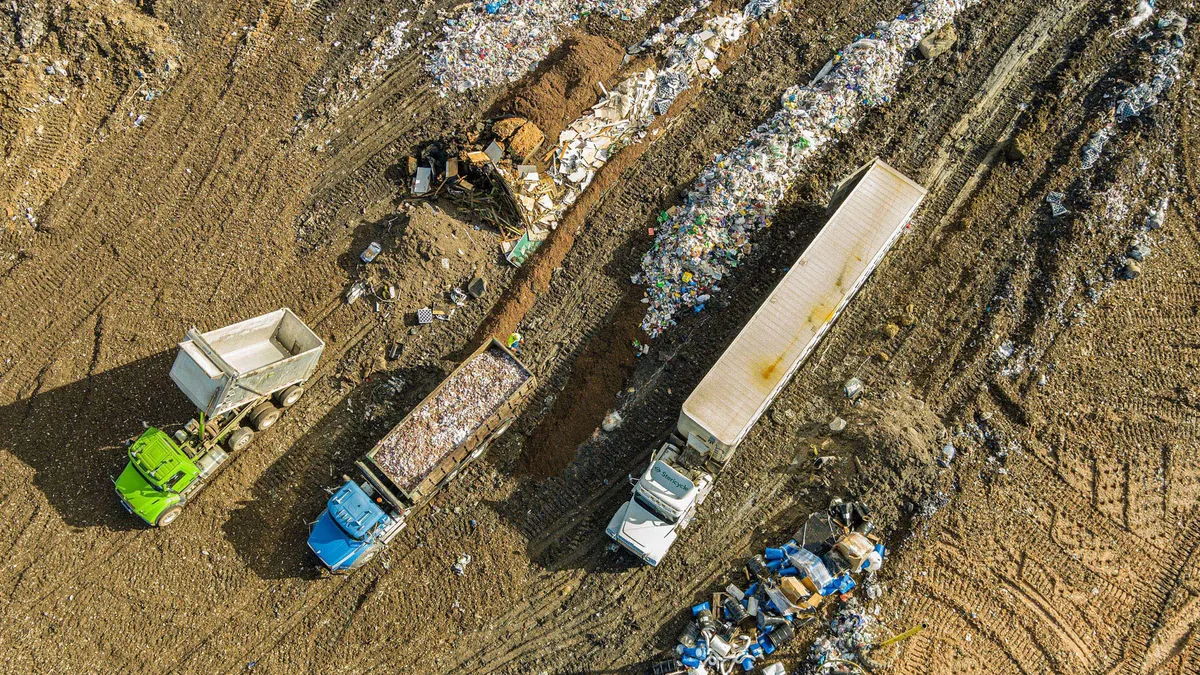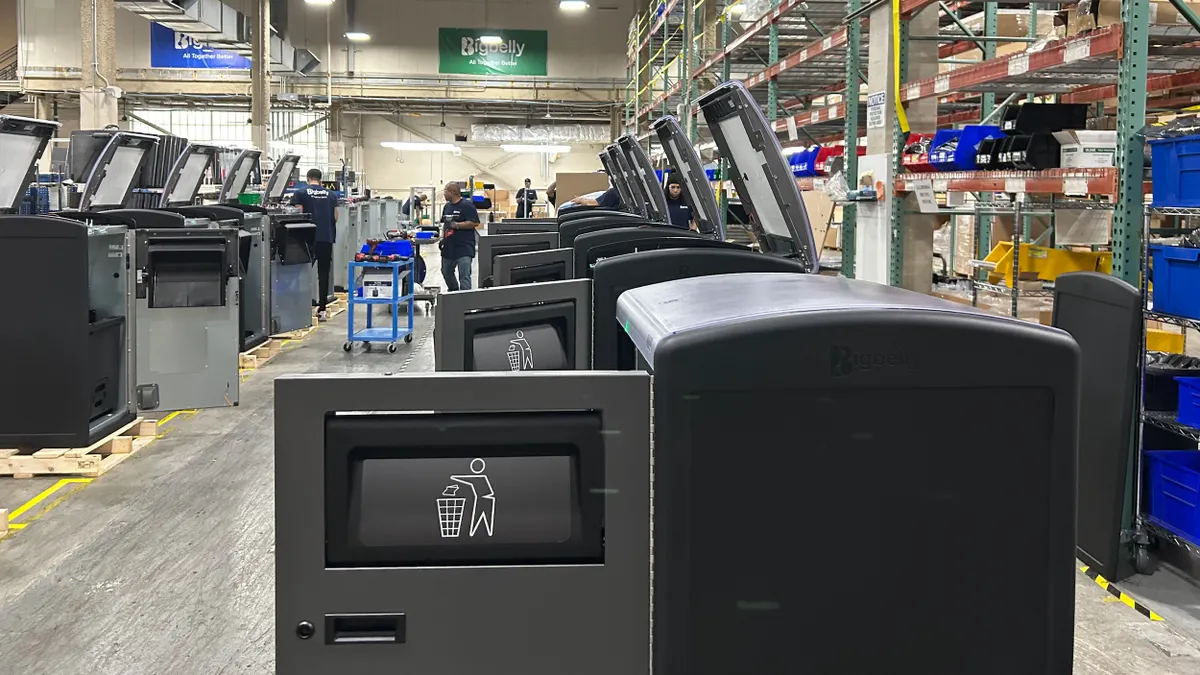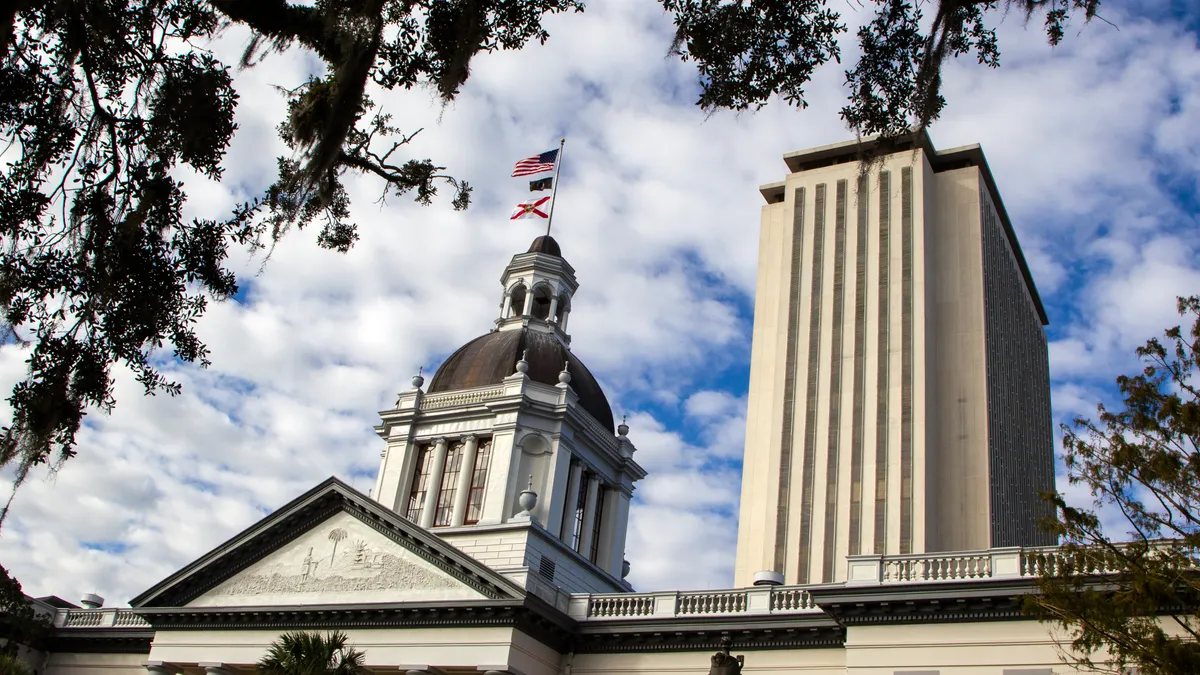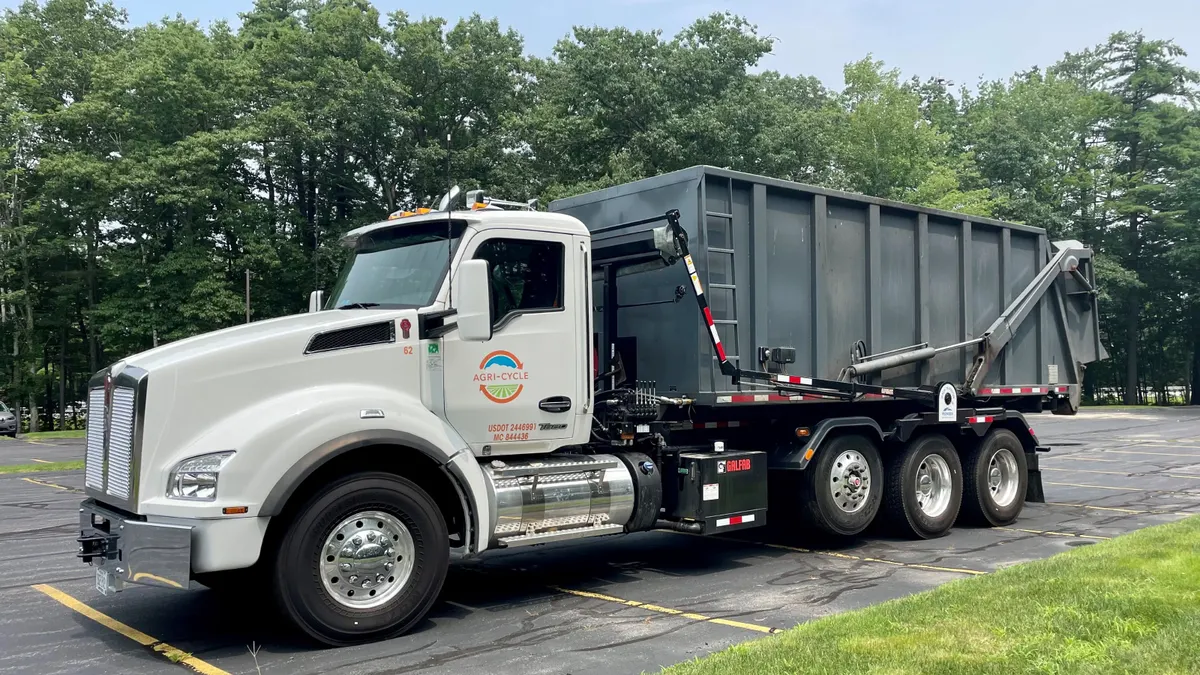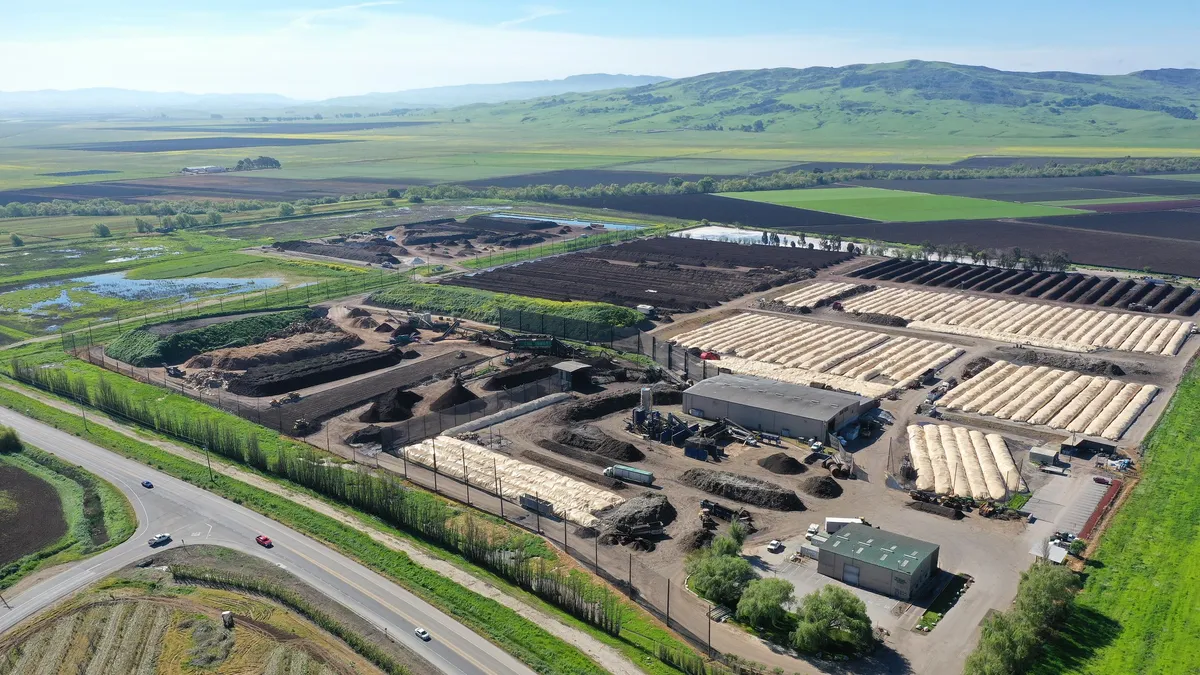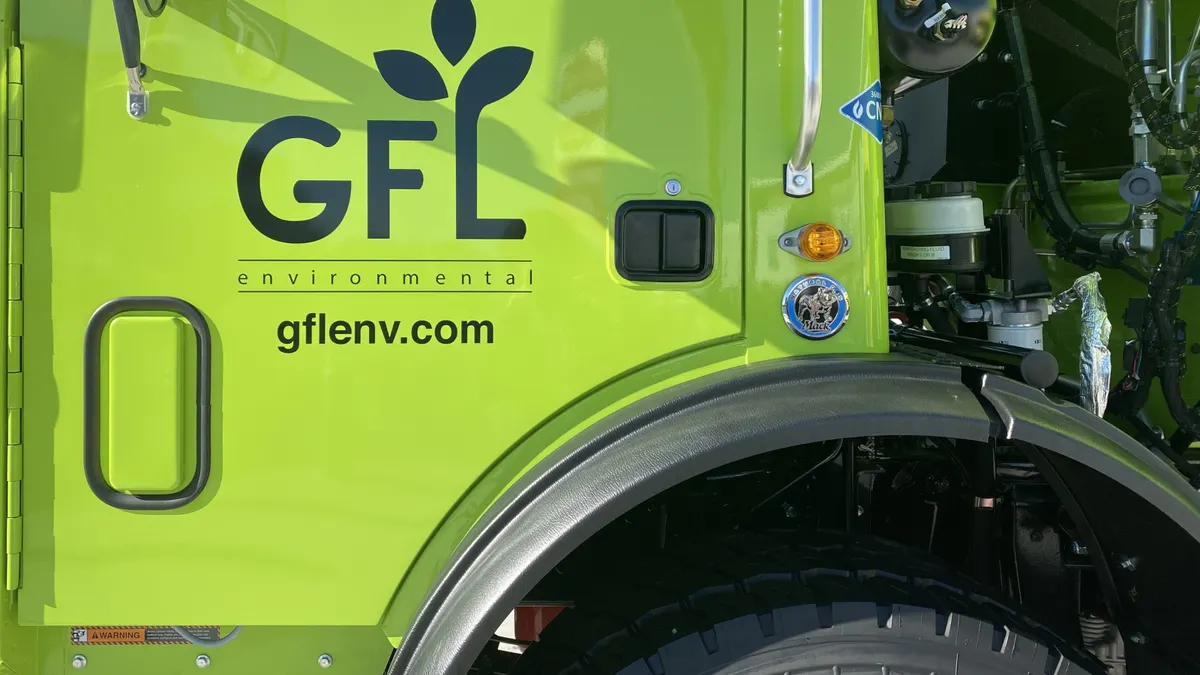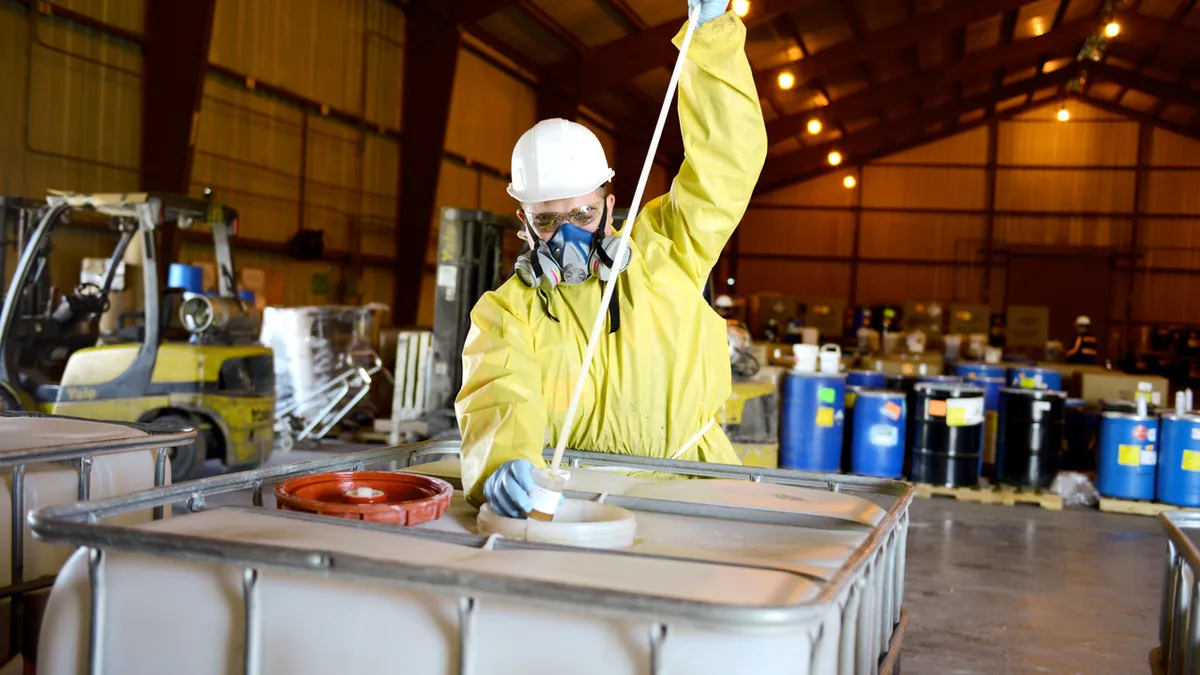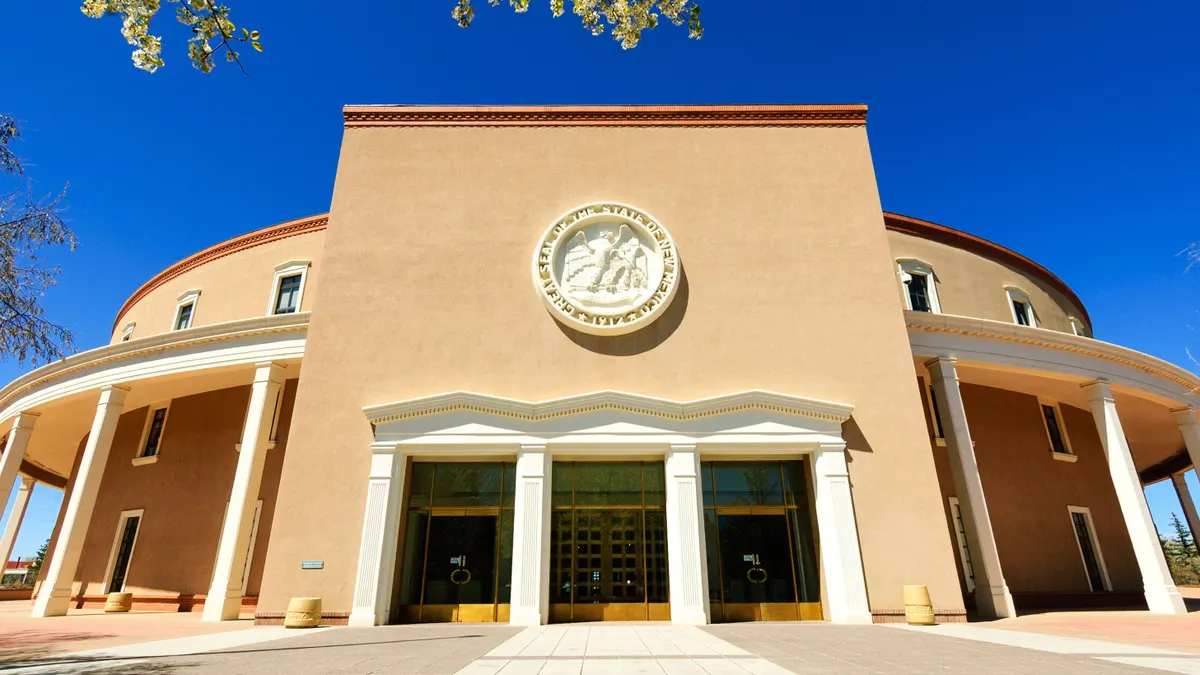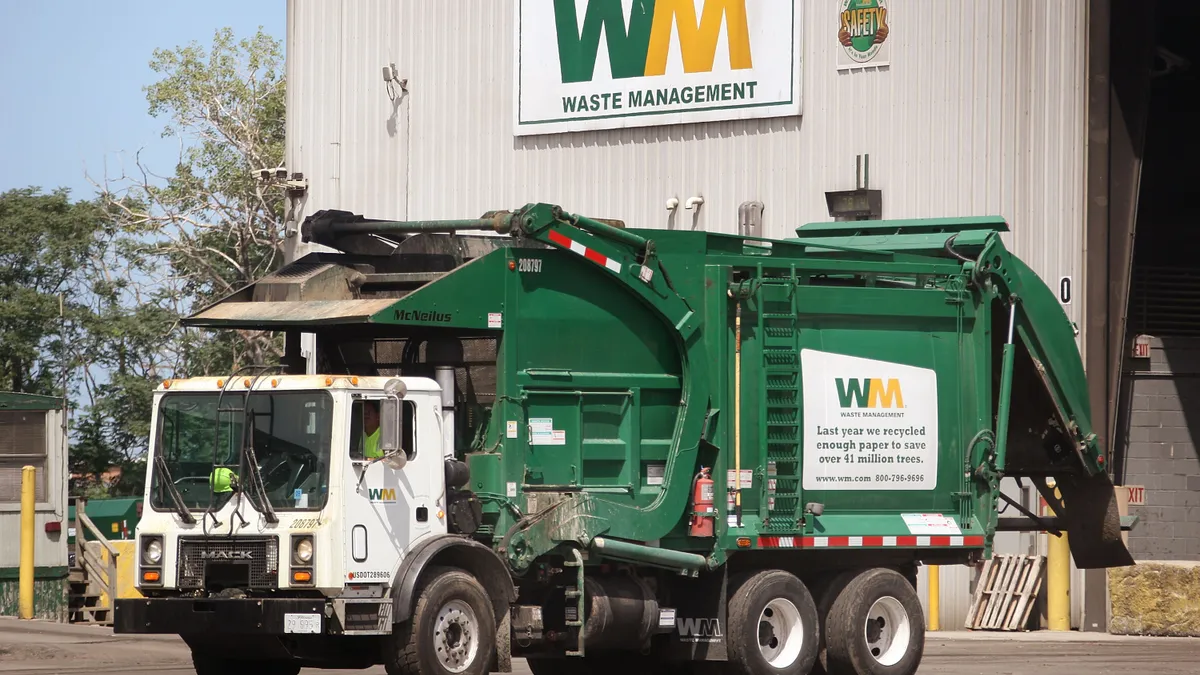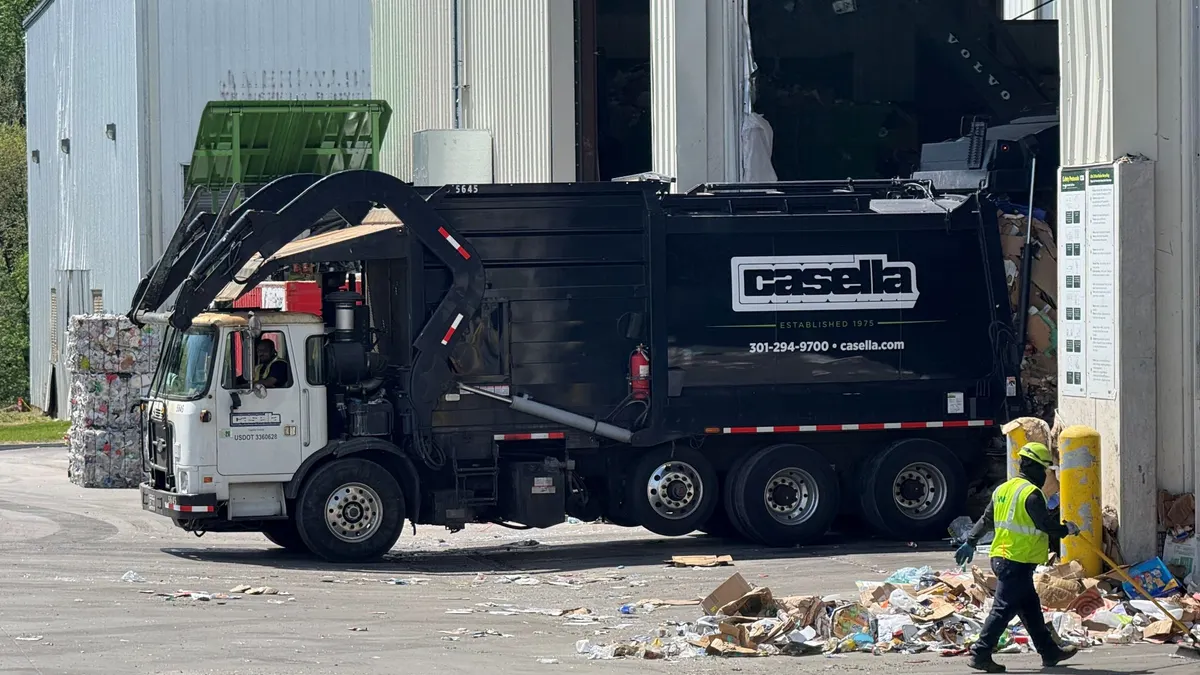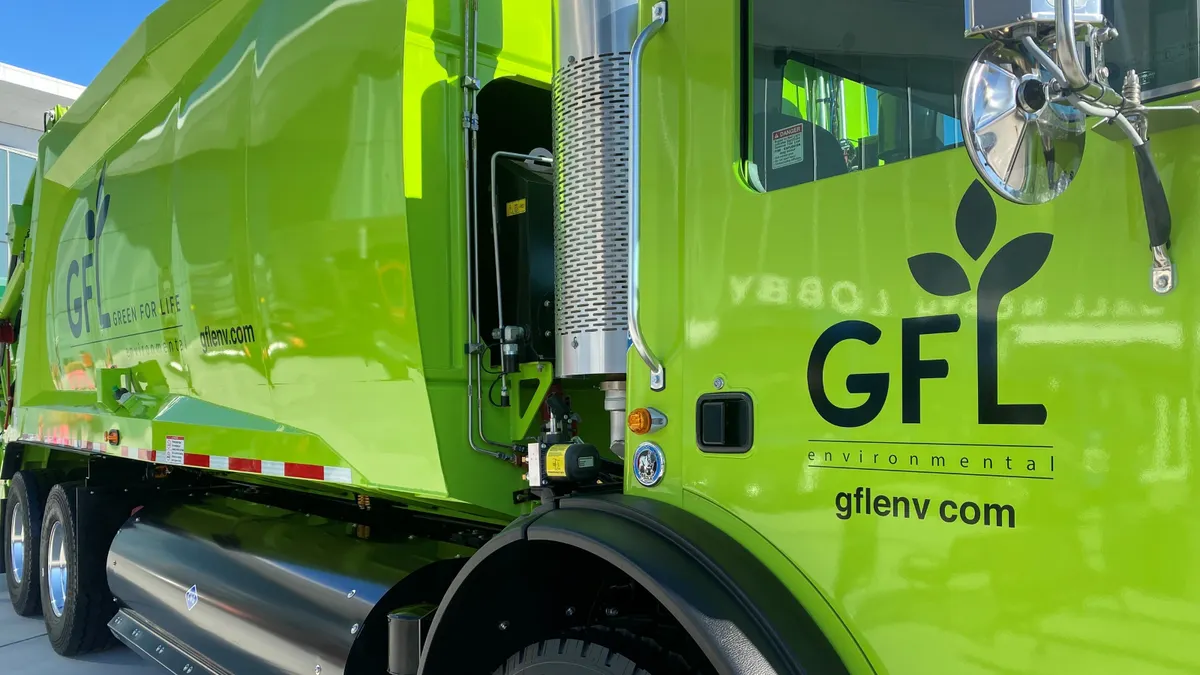The waste and recycling industry is adapting to a changing economy in 2025, shaped in part by President Donald Trump’s tax law and tariffs.
Waste Dive recently caught up with industry leaders and analysts to break down what these policy changes, plus recent M&A and recycled commodity trends, might mean for the rest of this year.
Trump provides another tax law boost
The new tax law, known as the One Big Beautiful Bill Act, includes multiple provisions that boost operations for waste businesses — but still not everything they’d hoped to see.
The National Waste & Recycling Association was advocating for a repeal of the excise tax for heavy-duty trucks, which dates back to World War I, and the establishment of an alternative fuel tax credit that would offset some operating costs for compressed natural gas vehicles. Neither happened, but the industry still has plenty to be happy about.
“What they did get is 100% bonus appreciation and retroactive, and that's actually a bigger dollar number,” said NWRA CEO Michael E. Hoffman.
This means businesses can immediately deduct the full cost of certain capital expenses from the year’s taxable income. This provision started in 2017, from Trump’s Tax Cuts and Jobs Act, and was previously set to start phasing out in 2023.
“If I had to trade off the alternative fuel tax credit versus bonus depreciation, you would take bonus depreciation,” said Hoffman. “Bonus depreciation is a big deal.”
He said this is because while fuel may account for an estimated 6% of a company’s annual spending, capital spending accounts for an average of 10% to 13%. About half of that capital spending is subject to bonus depreciation.
WM noted in its latest quarterly filing that the new bonus depreciation provisions will reduce its cash taxes by an estimated $125 million in 2025. During the company’s latest earnings call, CFO Devina Rankin said this could potentially increase to $200 million by 2027. Republic Services reported an expected $80 million benefit this year and Waste Connections estimates a $25 million benefit.
For the most part, Hoffman doesn’t expect major companies to change their capital spending plans based on this as they already plan for standard equipment replacement cycles. Truck buying timeframes have finally shortened, after a multiyear pandemic-spurred delay, to around six months for chassis purchasing. He said companies might have utilized this more if they wanted to pre-buy trucks before a new engine hit the market to comply with California emissions regulations, but that is now a moot point following the repeal of those regulations.
In addition to bonus depreciation, Hoffman also noted another positive change for the sector. The tax law now allows companies to calculate the tax deductibility of interest expenses based on earnings before interest, taxes, depreciation and amortization, commonly referred to as EBITDA. The latter two categories had been excluded before. This will increase earnings by allowing companies to deduct a larger amount.
Another aspect of the law is the renewal of a 21% corporate tax rate established in Trump’s Tax Cuts and Jobs Act. Though certain waste industry companies already pay different rates based on their tax strategies and this is considered less significant.
That 2017 law was considered similarly favorable for the industry. A notable portion of the savings from this change went to shareholder returns or other uses, but major companies also announced spending directly for employees. WM pledged an estimated $65 million to give $2,000 bonuses. Republic also announced plans to spend $200 million over multiple years to upgrade locker rooms and trucks.
Hoffman said he doesn’t expect waste companies to take a similar approach this time around.
“You were at the beginning of that exacerbated driver issue. So there was monies being spent that were answering and solving questions around that to just improve the work-life experience. So no, I don't think you'll see anything out of the ordinary” this time, he said.
Waste and environmental services still attracting investors
The first half of 2025 saw private entities continue to pour money into the waste and environmental services sector, seeking investments in stable businesses with healthy outlooks for growth.
While the cumulative value of transactions executed in 2025 so far is below average compared to the last few years, according to deal advisory firm Houlihan Lokey, the number of deals remains steady as the market for tuck-in and other mid-sized acquisitions remains robust,
That's occurring in part because of the impacts of tariffs and the current uncertainty in the U.S. macroeconomic environment, said Elazar Guttman, a partner specializing in M&A and private equity at Sidley Austin. He said investors are seeking stable assets amid the uncertainty and the environmental services sector fits the bill, a trend that's in line with similar economic cycles in years past.
"The level of activity in the space remains really high. People are not shying away at all, they're leaning in," Guttman said.
That has translated to a healthy deal volume in 2025. Waste Dive tracked at least 82 transactions in the solid waste, environmental services and electronics recycling sectors in the U.S. and Canada in the first half of the year. Major deals include Republic Services' acquisition of Shamrock Environmental, an industrial and wastewater company, and GFL Environmental's spinoff of its environmental services division through a deal with Apollo and BC Partners. Both those deals occurred in the first quarter.
Republic previously acquired U.S. Ecology in 2022. During Republic’s Q2 earnings call in August, CFO Brian DelGhiaccio was asked about how the environmental services market had evolved since that deal. He noted valuations have "absolutely gone up" as demand for those companies has increased.
That may reduce the number of market participants able to make a deal, or tip the scales in favor of infrastructure funds as acquirers due to the lower cost of capital they're able to offer compared to other potential buyers, said Effram Kaplan, senior managing director at Brown Gibbons Lang & Co. Kaplan advised GFL's environmental services deal and its recapitalization of Green Infrastructure Partners. He said the two transactions are examples of this growing phenomenon.
“Owners can secure really attractive valuations and generate liquidity, especially when they have strong growth prospects, and not have to sell the business completely,” Kaplan said.
Kaplan said market activity has historically focused on the top-tier “A” assets in the waste sector. But he noted there are fewer large, “chunky” assets available for deals today than there were a decade ago. And if the macroeconomic environment becomes more stable through the second half of the year, transactions for smaller assets in the environmental services space could continue to grow.
Publicly traded companies also remain eager to spend on M&A. Executives at GFL said they expected to spend $900 million on acquisitions in 2025, and have spent only about $200 million so far. WM President John Morris previewed a “fairly sizable” deal that may come in the second half of the year. Waste Connections also projects spending another $100 million to $200 million in the second half of the year, CEO Ron Mittelstaedt said. And Republic Services and Casella are also expected to continue closing on deals.
Tariffs raise questions for equipment purchases
The ongoing effects of tariff uncertainties continue to influence how the U.S. waste and recycling industry prioritizes operations and spending decisions.
The U.S. has enacted or updated numerous tariff agreements in recent months and is in the process of potentially revising others. The Trump administration has signaled that such efforts could help shore up domestic supply chains, including for recycled commodities.
But even seasoned waste and recycling industry players are still not sure what’s coming next, and that wait-and-see approach has already had an effect on supply chain and business-focused spending, said Emily Friedman, recycled plastics senior editor at ICIS.
“At any moment, things could change, and that continues to leave a lot of uncertainty in the industry of what next year could hold,” she said.
Equipment and fleet-related purchases are among those feeling the effects. NWRA’s Hoffman said this was most relevant for certain smaller but essential parts of equipment.
“Virtually all of the steel that goes into our fleets and our containers is domestic, a little bit might be Canada, Mexico,” he said. “So this is really about components, subassemblies,” which he added are still slower to obtain due to pandemic-related supply chain issues.
Hoffman also said members were watching potential effects for recycling equipment, some of which is imported, but it was too soon to know the full effects. He noted that spending on major MRF construction projects and retrofits may have peaked in recent years, which helped with the timing of possible tariff effects.
But it’s not just major machinery that has become subject to tariffs, Friedman said. Common “consumables” critical to recycled resin production, such as filters and screens, along with supersacks made from polypropylene, are often imported from Asia. “These niche pieces of the production process are getting more expensive and are adding incremental cost to the industry,” she said.
This uncertain environment has prompted some waste companies to adjust the timing of fleet and equipment purchases for the year. Waste Connections, for example, plans to accelerate some fleet purchase plans in 2025 to avoid what the company calculates could be a possible 2% to 3% cost increase in 2026 for elements such as truck bodies and chassis. But other companies like WM say their balance sheets are less susceptible to tariff impacts because of the timing of completing certain major infrastructure projects like its renewable natural gas upgrades.
Some commodity markets hit a rough patch
Recycled commodities markets are also weathering their share of tariff uncertainty. Paper markets so far have seen less tariff exposure compared to some other materials, industry trade groups say, in part because the U.S. exports much of its paper to Canada and Mexico and is currently shielded from further tariff effects because of the U.S.-Mexico-Canada Agreement.
Paper is a commodity that “tracks pretty closely to general economic performances,” noted Terry Webber, vice president of industry affairs for the American Forest & Paper Association, during a July tariff webinar.
But that leaves some commodities, such as OCC, vulnerable to impacts from consumers who are now restraining their spending due to higher costs for health care, groceries and other necessities, said Chaz Miller in a market report for the Northeast Recycling Council.
Some plastics markets are seeing much more direct tariff impacts, Friedman said. Prices for rPET, for example, have been “disastrous” in recent months, reaching extremely low prices due in part to oversupply.
That’s because buyers were “pre-buying and overbuying” back in March and April, a time when the tariff picture was even murkier than today and buyers did not yet know that rPET from Canada and Mexico would eventually be exempt from reciprocal tariffs under USMCA.
Buyers were also overbuying to prepare for the summer, a time when the material is typically in higher demand for use in beverage containers and other items. “But the summer season came and went, and honestly, wasn't as strong as anticipated. Now we're stuck with all this inventory that had been brought over in March and April,” she said.
Meanwhile, markets for rPET followed a more traditional seasonal pattern in places with less tariff uncertainty, such as parts of Europe, she said.
Tariff impacts for recycled PP and PE have been more minimal because those commodities “have pretty heavy domestic markets, with some crossover with Canada and Mexico,” she said. “The fact that those were exempt through USMCA took a lot of that risk off the table.”
Small volumes of recycled HDPE from Asia or some European countries will feel the impact of tariffs, she said, “but that's not enough to move the broader market for those individual purchases.”
The big question is what will happen when companies start looking at 2026 contracts for their material, she said. “They’ll be deciding how much risk to put on purchasing on the spot market and potentially importing, versus how much to put under domestic contract,” she said.
Buyers are also wary about whether the USMCA exemptions will hold into the next year, especially for both virgin and recycled PET, she said. “You have to wonder if we’ve really seen the full impacts of tariffs at this point, or is there still more to come,” she said.
Tariffs may also drive possible opportunities for domestic manufacturing and recycling-focused business expansions, such as battery recycling.
The Trump administration has said it wants to increase production of lithium and other critical minerals. That gives battery recycling companies hope that the federal government will drive future business, said Danielle Spalding, vice president of public affairs at battery recycler Cirba Solutions.
Cirba sources end-of-life batteries from around the U.S. The company is currently building a facility in South Carolina that produces battery-grade sulfates.
Short term, tariffs will likely increase costs for battery manufacturers that use imported components. Consumers will likely see higher costs for battery packs that are completed and sold in the U.S. because the supply chain for these products is still very international, she said.
Long term, it’s hard to say how tariffs will affect battery supply chains, especially as battery recyclers work to build up and offer domestic supplies of critical materials.
Another challenge is pricing competition from “competitors overseas aiming to control supply and demand by either flooding the market with excess material, or purchasing at inflated prices. That's creating challenges to our markets as we're trying to grow,” said Spalding.


